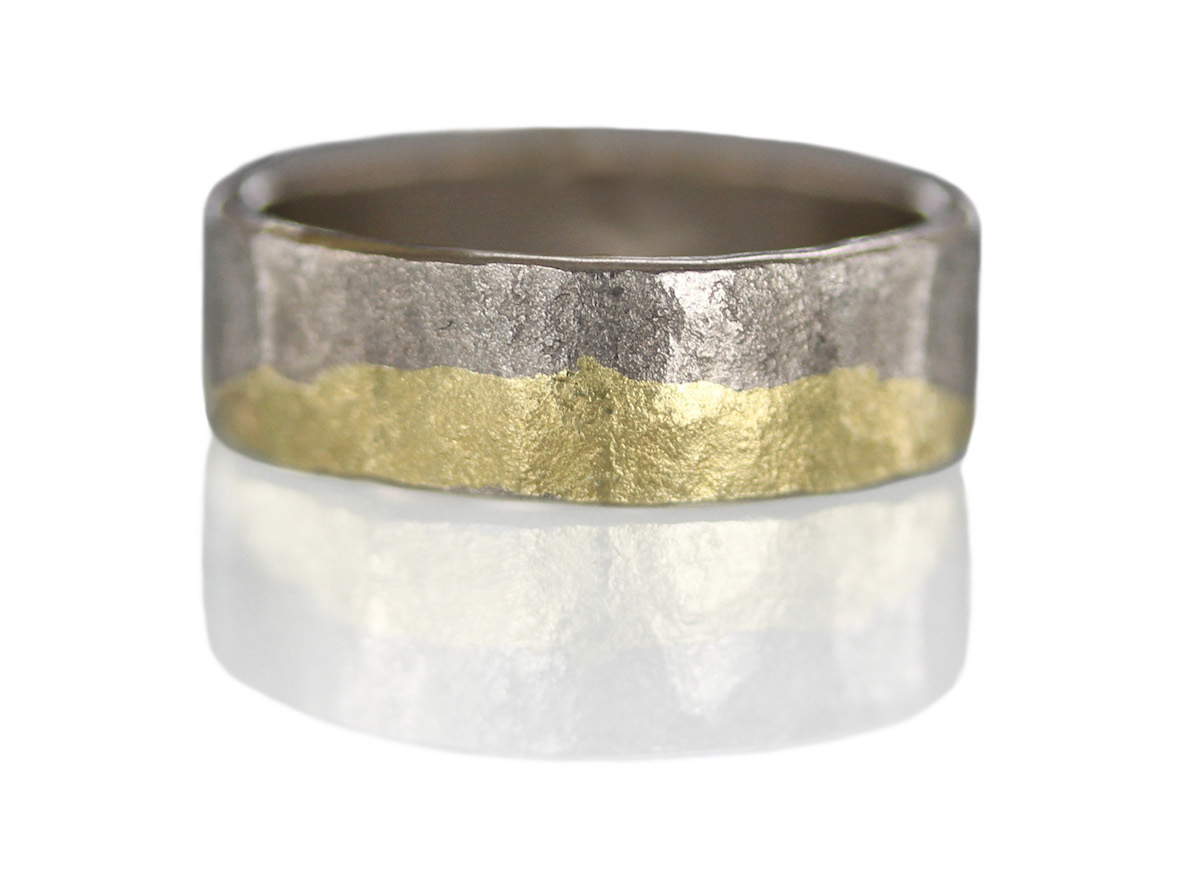Create Custom Wedding Bands That Ring True

Courtesy photo
“A custom-made wedding band is a completely one-of-a-kind piece that symbolizes a couple’s completely one-of-a-kind relationship,” says Sophie Hughes, Boston’s go-to gal for custom-made wedding bands. “Just as they’re truly unique, so are their wedding bands.”
We asked this Best of Boston winner about how a couple should go about designing their own wedding rings.
What should a couple consider when customizing their wedding bands?
Since this is one of the few pieces of jewelry couples shop for together and wear every day, it’s wise to make design decisions with the future in mind. There’s a desire to be current and to have a unique ring, but I advise clients to temper that with classic elements. You want the style of the ring, and your love for it, to last a lifetime.
Do couples still ask for matching bands, or are they going rogue with their own designs?
I find that couples like to have one element that connects their rings, but don’t want a matching set. They may choose the same metal, similar textures, or the same stones (his are often her birthstone inside the band, keeping her close always), but not all of the above. I love the poeticness of their bands being in conversation but not exactly the same, like their personalities.
What are the elements that go into creating a band?
We begin by discussing the overall style or aesthetic they each want. Details like metal type, stones, thickness of the band, texture, type of setting, and silhouette all have to come together in a particular way to create the vibe they’re looking for.
The starting point for design is typically metal: If she wants her band to be the same metal as the engagement ring, and if he wants his to match hers. They should also consider if they want their bands to include diamonds or gemstones.
It’s typically a secondary thought, but size is a huge deal. It needs to fit right to be comfortable, look proportionate on the hand and next to other rings, and to avoid being lost. This means sizing the client’s fingers on multiple days to catch any fluctuations. Fingers swell and shrink with the weather and diet.
How does one choose width and thickness?
Standard men’s bands are 6 mm wide and 1.5 mm thick. They vary between 4 mm and 8 mm wide, and 1 mm and 2.5 mm thick. I find a strong new trend in men’s and women’s bands is to go as thin as possible. Men are asking for even 3 mm wide bands, and they want them lightweight. Thickness really just affects weight, but width is a bigger comfort question. One needs to be able to make a fist comfortably, or shake hands, without being constricted or having the edge of the band dig into you. The band width in proportion to your finger length is an important consideration.
Ladies also are after the skinny bands, often asking for 1 mm by 1 mm—which is on the verge of too thin unless it’s platinum (which is stronger than gold). Traditional ladies bands are 2 mm to 6 mm wide, and 1 to 1.75 mm thick. Typically, ladies want the thickness/height/width to complement their engagement ring and nest nicely around it, but it needs to be durable too. Women’s wedding and engagement rings rub against each other for a lifetime, and even platinum will become a bit thinner from this. They should be made just a hair thicker to account for that.
Lifestyle is also taken into consideration: Do they work with their hands a lot? Will they wear it every day? Do they play sports? Go thicker!
How does a couple choose the metal they want to work in?
Primarily, it’s a color choice. We use 100 percent recycled metal whenever possible and work with 14k and 18k gold in yellow, white, or rose colors, as well as platinum and palladium. All precious metals will stand the test of time and lifestyle, as long as the bands have the appropriate thicknesses.
What are some decorative finishes a couple can opt for?
We love texturing the bands by hammering, for a subtle unique look. Adding melee (the small pave diamonds) is really popular as well. Who doesn’t love a little sparkle? For ladies, adding a curve to the band offers dimension and interest.
How long before the wedding should a couple start the custom process?
A custom ring will take anywhere from four to eight weeks to produce. To be on the safe side, I would recommend choosing your jeweler and starting the process four months out. Better safe than sorry on something you’ll wear daily for the rest of your life!
Getting married? Start and end your wedding planning journey with Boston Weddings' guide to the best wedding vendors in the city.


